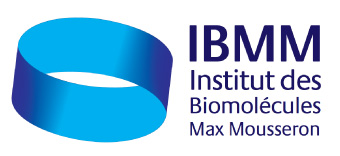Double conférence de spectrométrie de masse
Séminaire Chimie ED459
Dr. Emmanuelle
Le Mardi 08 novembre 2022 de 14h à 15h30
UM FdS, Salle de Cours SC-36.05 (campus Triolet, bâtiment 36)
Date de début : 2022-11-08 14:00:00
Date de fin : 2022-11-08 15:30:00
Lieu : UM FdS salle SC-36.01 (Triolet bât. 36)
Intervenant : Dr. Emmanuelle
LBM Laboratoire des BioMolécules UMR 7203 CNRS, Sorbonne Université, ENS Paris | ICSN Institut de Chimie des Substances Naturelles UPR 2301 CNRS, Gif-s/-Yvette
1. Deciphering molecular interactions – it is all about the interface
Dr. [marron]Emmanuelle
LBM Laboratoire des BioMolécules, UMR 7203 CNRS, Sorbonne Université, ENS Paris
In this talk I will present the photoaffinity labeling technique coupled to MS analysis to highlight direct interactions between biomolecules with an overview of the studies we perform in the Laboratoire des Biomolécules at Sorbonne Université. I will focus more particularly on the study of the peptide/membrane interface by looking at the interaction of membranotropic peptides such as Cell Penetrating Peptides (CPP) with mammalian cells. We will discuss the reactivities of photoprobes as a function of their environment and the importance of knowing this photoreactivity for data interpretation. Finally, I will present how important it is to have a multimodal approach combining complementary disciplines to improve our understanding of biological systems. I will illustrate this by presenting our latest results involving in cells internalization experiments, Differential Scanning Calorimetry (DSC), NMR and molecular dynamic (MD) simulations to better understand the role of the phospholipid PIP(4,5)P2, which is a minor lipid in membranes, in the mechanism of entry of the CPP Penetratin in cells.
2. Molecular network and SCF-MS/MS for the characterization of complex mixtures
Dr. [marron]David
ICSN Institut de Chimie des Substances Naturelles, UPR 2301 CNRS, Gif-s/-Yvette
LCM Laboratoire de Chimie Moléculaire, UMR 9168 CNRS, École Polytechnique, Palaiseau
For the most effective analytical strategies, development and validation include optimization of analytical parameters such as resolution, sensitivity, cost, or speed. Nevertheless, other aspects concerning operator safety and environmental impacts are usually not considered at the same level in academic laboratories. Thus, an absurd situation emerged, due to the side effects of analytical methods that generate a large amount of chemical waste and lead to strong negative environmental impacts. Somehow, the chemicals used for analysis are much more toxic than the analyzed species themselves. Taking into account current public concerns on ecological questions, environmentally friendly methods are mandatory even at the lab scale.
One largely emerging way to solve this is to replace organic solvents by Supercritical Fluids (SF), such as carbon dioxide (CO2). In order to illustrate how SF CO2 can be used for chromatography and coupled to modern tandem mass spectrometer (MS/MS) instrument, several examples for the characterization of complex mixtures, including lipids, will be introduced.
Moreover, data treatment of “big data” generated by mass spectrometry requires the use of chemoinformatics tools including molecular networks. We developed an user-friendly MetGem software (Anal Chem. 2019, 90(23), 13900–13908) to generate, visualize and annotate molecular networks. MS/MS data can thus be classified leading to the highlight of new chemical structures in complex samples.
The combination of SFC-MS/MS together with molecular network offers a new avenue for the dereplication of complex mixtures.
Contact local IBMM : Prof. Christine
